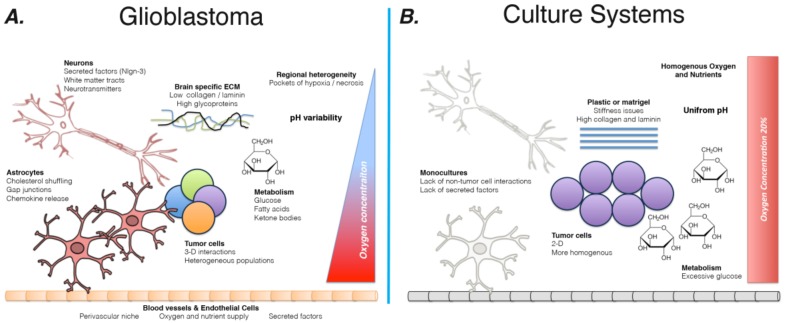Figure 1.
Schematic comparison of tumor microenvironment and current culture systems. (A) The brain microenvironment provides a multitude of non-tumor cell types, including neurons, astrocytes, microglia, and endothelial cells. These populations are present in the tumor environment and have been shown to influence the progression of GBM tumors, as well as abet their ability to resist current standard of care therapies, including radiation. In addition, tumor cells in the brain grow in a complex 3D structure entangled with a brain-specific extra-cellular matrix (ECM). They also exhibit a marked amount of intratumoral heterogeneity, with a variety of subpopulations within each tumor. Finally, the tumor microenvironment varies widely across different anatomic locations, with differences in oxygen and nutrient availability; this range of milieus contributes to the intratumoral heterogeneity of GBM. (B) In contrast, current culture systems are over-simplified and introduce variables not encountered in the brain. Oxygen concentrations are held constant at 20% by most incubators, while media contains an elevated amount of glucose. Plastic flasks introduce an unnaturally stiff surface, which GBM cells are known to react to. Further, coating flask with matrigel, while better than culturing directly on plastic, exposes tumor cells to elevated levels of collagen and laminin. Mono-cultures mean that in vitro experiment fail to account for non-tumor cells contributions to the microenvironment.

